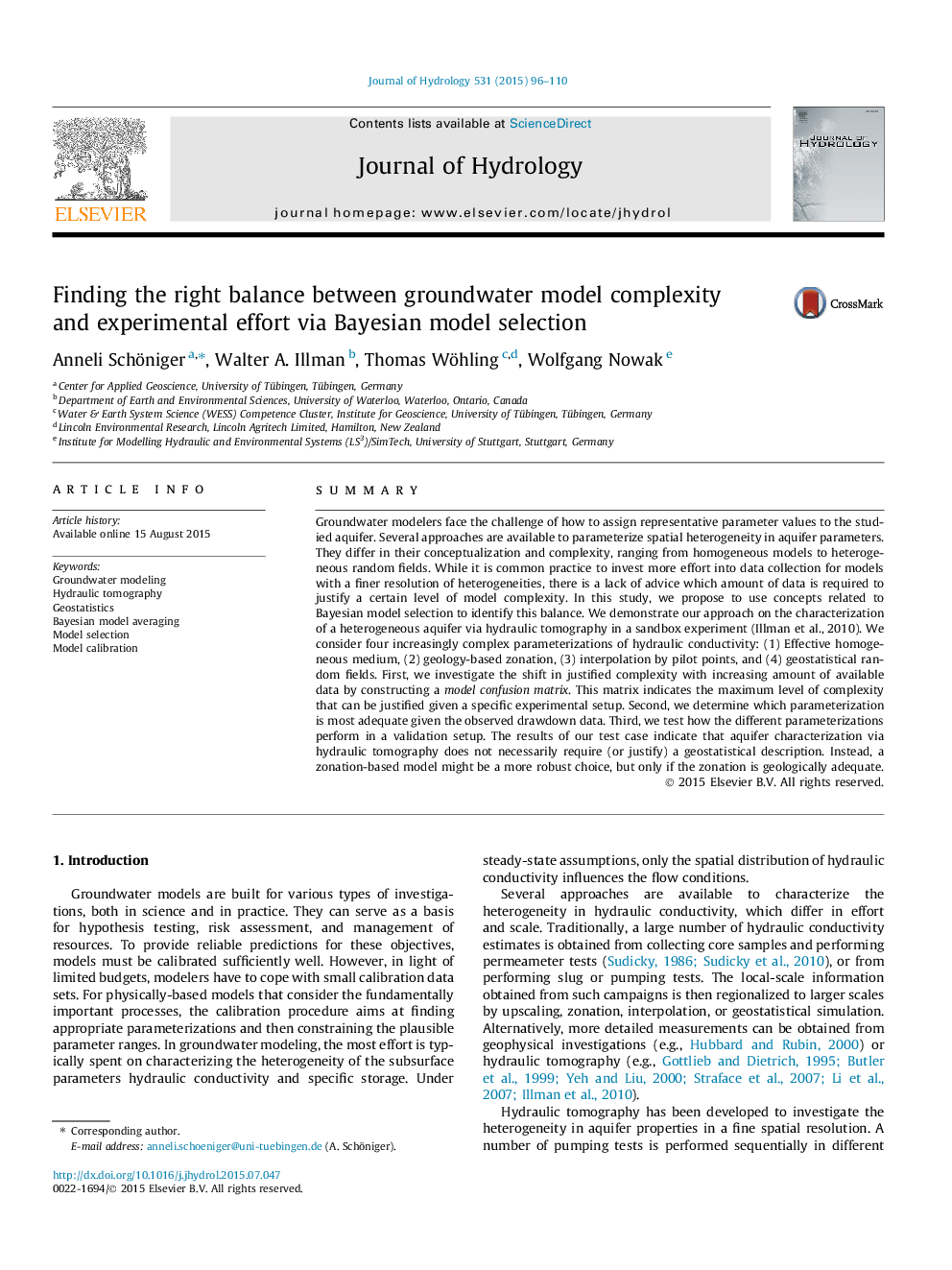| کد مقاله | کد نشریه | سال انتشار | مقاله انگلیسی | نسخه تمام متن |
|---|---|---|---|---|
| 4575883 | 1332880 | 2015 | 15 صفحه PDF | دانلود رایگان |
• We compare the adequacy of four increasingly complex groundwater models with BMA.
• Models are calibrated with hydraulic tomography data from a sandbox experiment.
• We analyze which level of complexity can be justified with the available data.
• Results show that, in our case, a geostatistical approach is yet too complex to be justified.
• Instead, a geologically well-informed zonation is most adequate in light of the data.
SummaryGroundwater modelers face the challenge of how to assign representative parameter values to the studied aquifer. Several approaches are available to parameterize spatial heterogeneity in aquifer parameters. They differ in their conceptualization and complexity, ranging from homogeneous models to heterogeneous random fields. While it is common practice to invest more effort into data collection for models with a finer resolution of heterogeneities, there is a lack of advice which amount of data is required to justify a certain level of model complexity. In this study, we propose to use concepts related to Bayesian model selection to identify this balance. We demonstrate our approach on the characterization of a heterogeneous aquifer via hydraulic tomography in a sandbox experiment (Illman et al., 2010). We consider four increasingly complex parameterizations of hydraulic conductivity: (1) Effective homogeneous medium, (2) geology-based zonation, (3) interpolation by pilot points, and (4) geostatistical random fields. First, we investigate the shift in justified complexity with increasing amount of available data by constructing a model confusion matrix. This matrix indicates the maximum level of complexity that can be justified given a specific experimental setup. Second, we determine which parameterization is most adequate given the observed drawdown data. Third, we test how the different parameterizations perform in a validation setup. The results of our test case indicate that aquifer characterization via hydraulic tomography does not necessarily require (or justify) a geostatistical description. Instead, a zonation-based model might be a more robust choice, but only if the zonation is geologically adequate.
Journal: Journal of Hydrology - Volume 531, Part 1, December 2015, Pages 96–110
